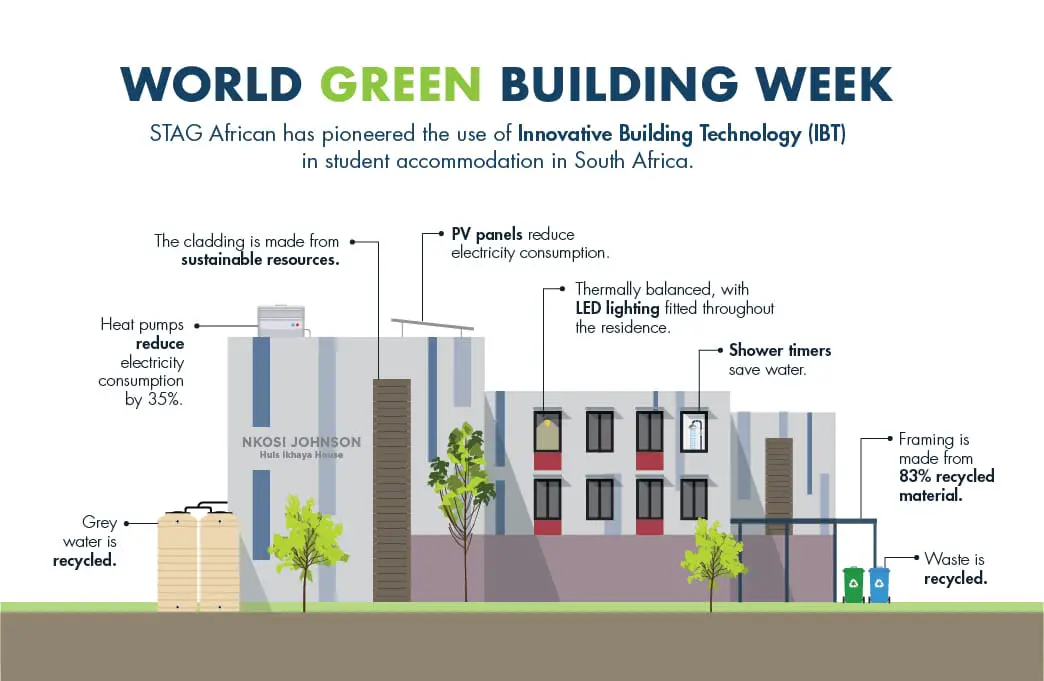Using Innovative Building Technology (IBT) for the construction of student residences across the country, STAG African has reduced heating and cooling costs by almost 70%. IBT is a green alternative to bricks and mortar buildings that uses lightweight steel structures, prefabricated off-site. This cuts construction waste from 25% to less than 0.1% of building bulk. The steel framing itself is 83% recycled, and the overall result is a carbon-neutral building process that costs less than a traditional bricks and mortar one.
“To make construction more affordable, developers need to look at every line item involved in their construction and ask how they can reduce capital and operating costs. By implementing green building practices, developers can reduce building time by 40%, which has the effect of dramatically reducing other associated costs, in some cases by up to 13%,” says Sean Kenealy Director at student accommodation group STAG African.
Also Read: Behind the post-pandemic construction industry obstacles are a host of opportunities
“The first – and easiest – step to achieve both affordability and sustainability, is through energy-efficient design. Solar panels, grey water systems and energy saving LED bulbs can help to reduce operational costs and impact, but these are most effective when paired with construction that is innately green – from using recycled materials, to optimal building orientation and natural ventilation,” says Kenealy, an established architect and urban designer.
The benefits of green building extend beyond economics and the environment, according to the World Green Building Council. The improved internal environment quality from increased ventilation, temperature and lighting control, the use of natural light, and the absence of toxic materials result in the improved health, comfort and wellbeing of building occupants. In a post-Covid world, these factors cannot be overlooked.
“As the country looks toward reopening the economy, we have an unprecedented opportunity to drive a green recovery led by sustainability and green solutions. Instead of trying to do things as we have always done them, we need innovate towards better, greener solutions that uplift the construction industry and protect the planet, as well as future generations,” says Kenealy.
With over 10 years’ experience developing student housing, STAG African have delivered more than 3 000 beds across South Africa, including Nkosi Johnson House, the greenest residence in Africa, at Stellenbosch University. Their holistic approach to campus development is guided by principles of community, flexibility, technology, sustainability, innovation, affordability, job creation and transformation.

